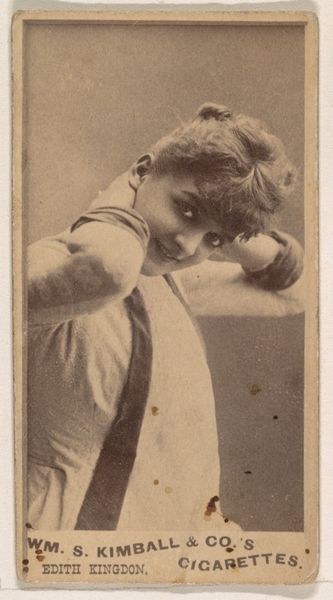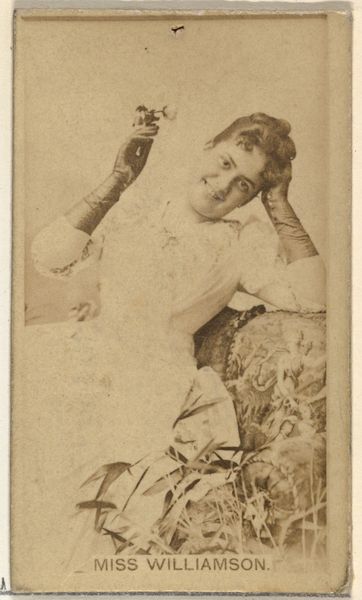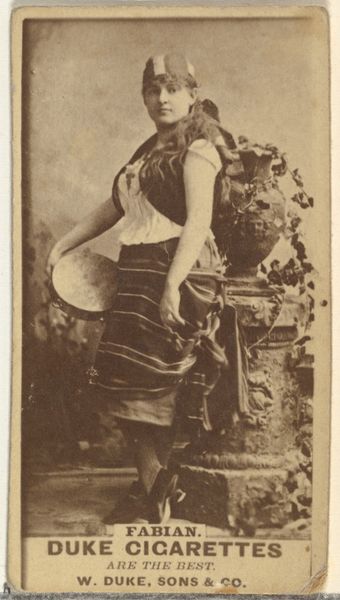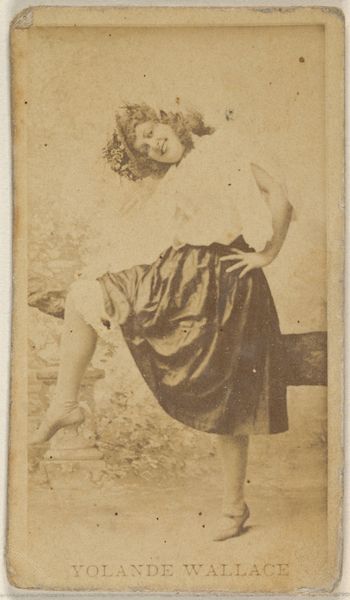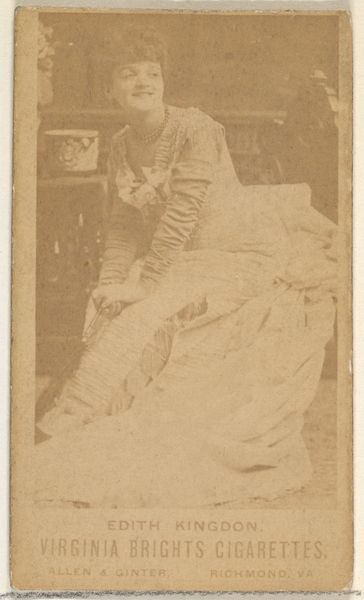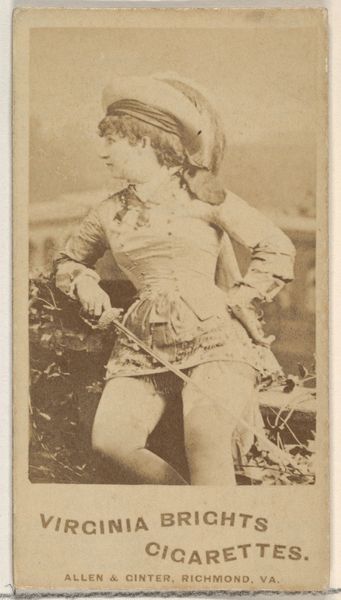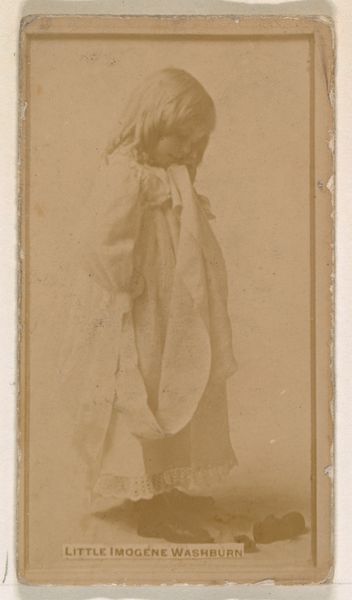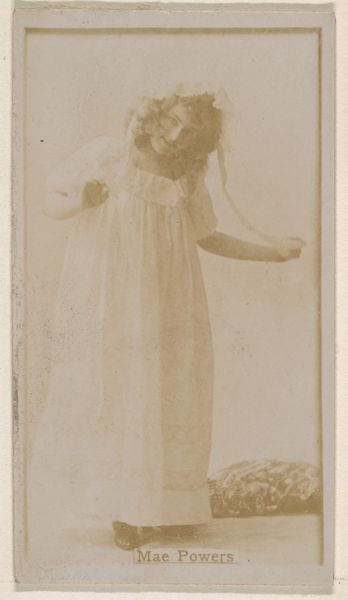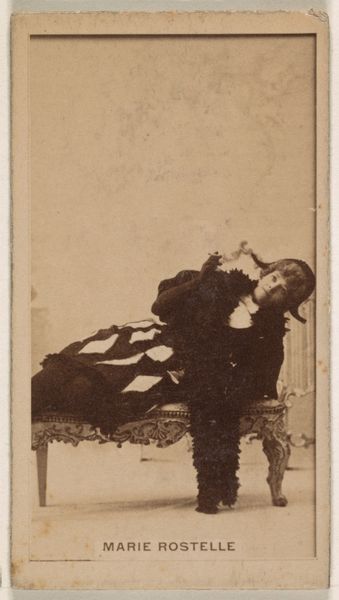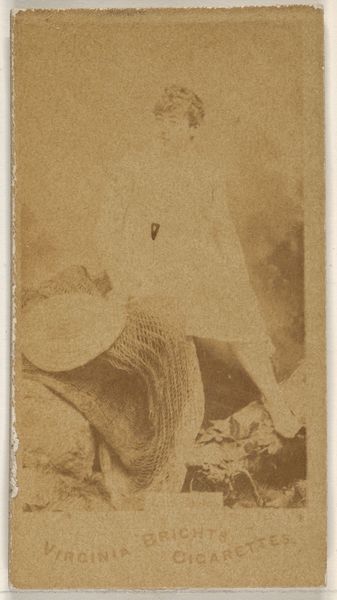
Edith Kingdon, from the Actors and Actresses series (N171) for Gypsy Queen Cigarettes 1886 - 1890
0:00
0:00
print, photography, albumen-print
#
portrait
# print
#
photography
#
albumen-print
Dimensions: sheet: 2 11/16 x 1 3/8 in. (6.9 x 3.5 cm)
Copyright: Public Domain
Curator: I find this portrait striking, a faded beauty rendered in shades of sepia. The composition directs our gaze inward, creating a moment of intimacy with the subject. Editor: Indeed. This is “Edith Kingdon” an albumen print created sometime between 1886 and 1890 by Goodwin & Company as part of the “Actors and Actresses series (N171) for Gypsy Queen Cigarettes.” Curator: It’s fascinating how these images were essentially advertisements, yet they provide glimpses into the lives of actresses during this era. Edith Kingdon was a very successful actress. Can you imagine the implications of a widely distributed image shaping her identity, not just as an artist but as a commodity? Editor: Let's also consider how the use of photography—relatively new at the time—affected the formal portrait tradition. It introduced a specific realism. Note the soft focus, perhaps necessitated by early photographic techniques or, strategically, to flatter the subject. The pose is constructed—studied—but achieves a certain candidness, a studied asymmetry that invites us closer. Curator: Right. And how that perceived “realism” clashes with the artifice inherent in being an actress, further complicated by the advertising purpose of the image. Consider the relationship of gender and commerce in the late 19th century; actresses were simultaneously objects of admiration and targets of moral judgment, as their images became commercial property. The actress in the Western world and in other social contexts. Editor: There’s an elegance in the tonal gradations, and consider the careful framing of the figure; even in its diminished state the light catches on the subject's features suggesting the depth of shadow and highlighting the planes of the subject's form, even in reproduction. It draws the viewer in. Curator: Absolutely. By situating the image within its historical context, it reflects broader societal trends relating to the public image of women, to consumer culture, and the rise of celebrity. I'm interested in researching whether that image caused issues for her or her family. Editor: From a purely formal standpoint, one can still admire the craft—the meticulous manipulation of light and shadow. The attention to pose. It demonstrates the formal portrait tradition—all within the constraint of a cigarette card format. Curator: True. And viewing it today challenges us to look critically at the power dynamics at play when the image and identity intersect with commercial interests. Editor: Indeed. Each aspect deepens our encounter with what, at first glance, might seem like a mere advertisement.
Comments
No comments
Be the first to comment and join the conversation on the ultimate creative platform.
